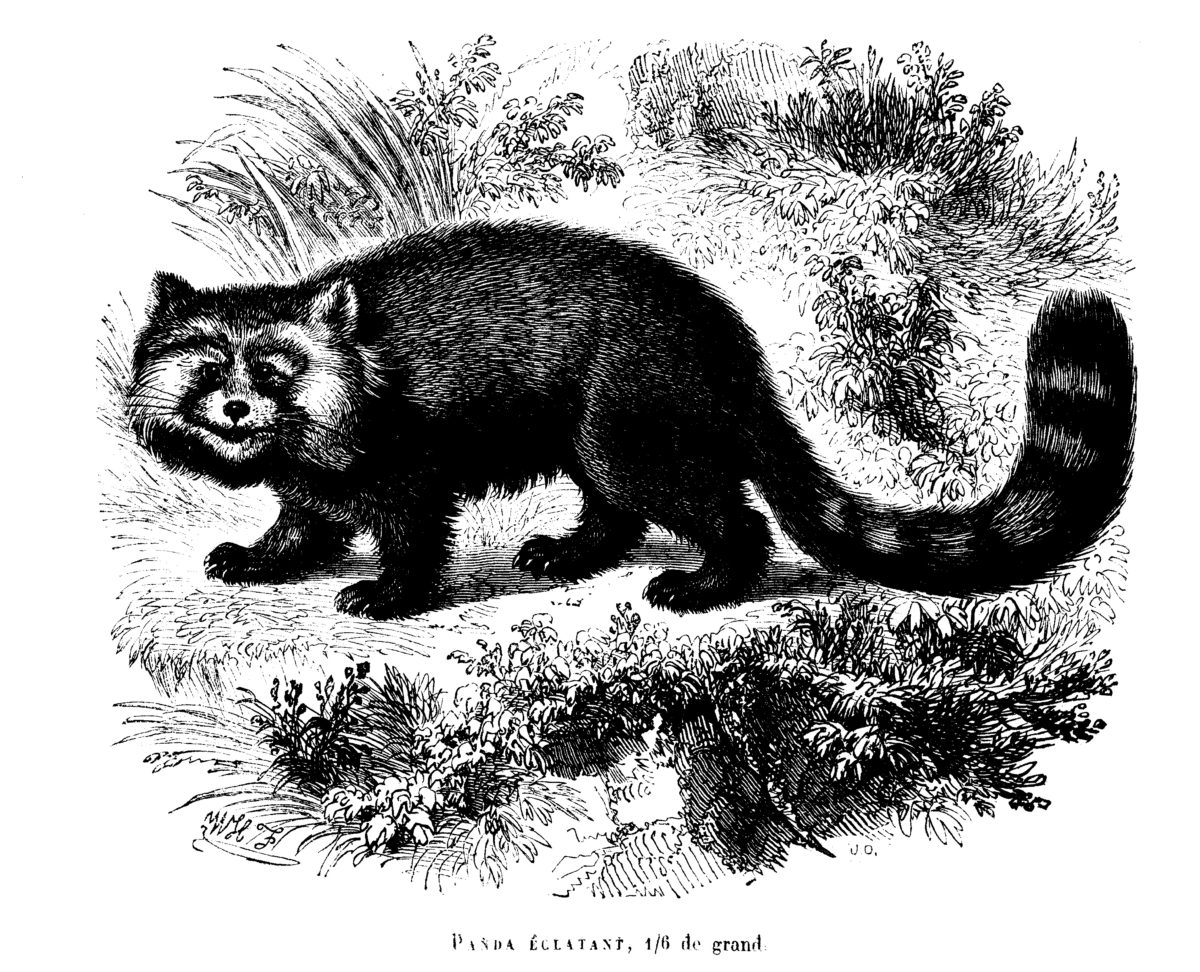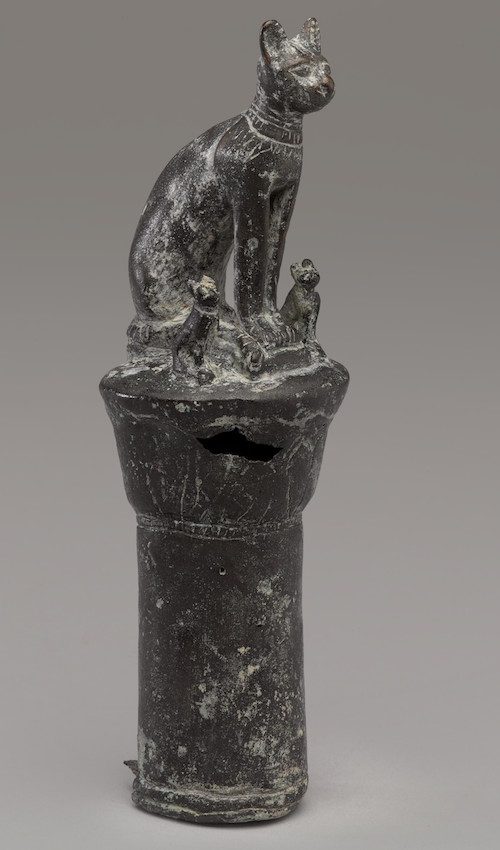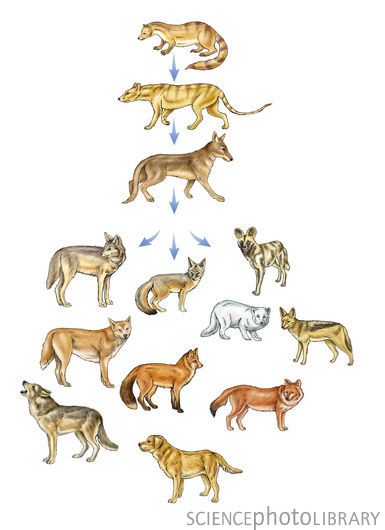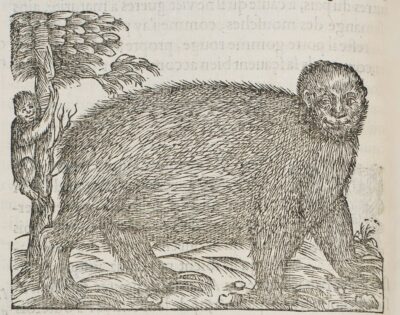| Creator | Paul Gervais (1816-1879) |
| Media Form | Illustration |
| Genre | Scientific Illustration |
| Technique | Paper, Lithography |
| Date and Location of Creation | 1854 in Paris, France (Period: 1850-1859) |
| Publication Information | Published by Paris, L. Cumer to the series “Les Trois Règnes de la Nature”. Public Domain. |
| Species Represented | The Red Panda (Ailurus Fulgens) |
Something most of us fail to consider is that just as the species that inhabit this earth alongside ourselves, we are going extinct. We are all familiar with existentialism of death and mortality, and we must all adhere to its consequences at something. Every day we watch species dwindle away and dissipate into the abyss, with no sense of restitution. Even with over eight million human beings walking alongside us on this planet, we are going extinct. We are going extinct because we are sentient individuals, and once we are gone, we are simply that. Gone. So, it’s difficult to understand how we could possibly allow for the extinction of our peers of varying speciation.
Now, in Zoology, the animal kingdom is traversed, everything from its anatomy to its physical appearance.
Background on the Red Panda

Enthusiasts across the globe have been captivated by the fiery red fur and obscurity of the creature referred to as the Red Panda, or as described by the Smithsonian, the Ailurus fulgens. In terms of truly capturing their presence, it’s been an elusive feat, as they’re known for their solitude and secrecy. This is not solely a characteristic of the species, but rather an attribute to their status as suggested by the World Wildlife Fund endangered, even in the year 2023. Nonetheless, even when French paleontologist and entomologist, Paul Gervais, completed the above representation of the species in the 19th century, it was still considerably evanescent.
As mentioned previously, the Red Panda is known as a solitary species, and has a similar representation spiritually. To those in areas where red pandas inhabit, such as the eastern Himalayas and southwestern China, according to Fauna, they are a symbol of non-conformity and individuality, specifically concerning its existence as the only member of the Ailurus family, as detailed by Science Direct.
Background on Paul Gervais

On September 26, 1816, Paul Gervais was born in the city of Paris, France. Throughout his career, Gervais became a prolific contributor to vertebrate paleontology, as described by the Society of Vertebrae Paleontology. Gervais left behind a fruitful legacy after his death on February 10, 1879, including but not limited to the commemoration of a species of snake referred to as Calamaria gervais, as described by Animalia.bio, and a species of cetacean revered to as Mesoplodon europaeus, or Gervais’ beaked whale, according to the NOAA Fisheries.
Also referred to as Francois-Louis-Paul Gervais, his career began when he became a student of Henri de Blainville according to Encyclopedia.com, who had previously succeeded George Cuvier, another prolific French zoologist, as described by Britannica. Eventually, in 1868, Gervais preceded them in their positions of professor at the Muséum National d’Histoire Naturelle in Paris, acorrding to Brittanica. Prior to that however, he served as professor of zoology and comparative anatomy from 1845 to 1865 at Montpellier, and the “dean of the faculty of sciences” in 1856. During his scientific career, Gervais published various studies and paleontological works, such as “Les Trois Règnes de la Nature”,which can be attributed to Archive.org, which featured the above representation of the Red Panda species.
The Evolution of Scientific Illustrations
When comparing the featured representation of the Red Panda, which was made in the 19th century, to a more modern representation, such as the above photograph, there is an evident difference. In the past, society as a whole heavily relied on the utilization of scientific illustrations to document these elusive species, such as the Red Panda. Without digital cameras, how else would the world learn of the existence of these barely visible animals? However, even in the age of photography, and such technological advancements, scientific illustration continues to hold an important role in the documentation of life on earth. According to Austrian biologist Michael Gruber, “The advantage of an illustration is that you can emphasize certain structures, which are almost invisible in a photo – this is possible with color or a special representation. Other structures can also be omitted, for example, certain parts of flowers or mouth tools of insects, in order to obtain an even more exact idea of the structure under consideration.”
As Compared to Modern-Day Representations
A feature that I took interest in was how albeit, in the past, the role of the scientific illustrator was much more coveted, as there failed to be a similarly efficient way of documenting these creatures. Unlike Gervais, in modern times there are a few researchers who aim to create their own illustrations, or graphical representations, alongside their written work. A lot of factors can be attributed to this, such as the necessity for a lot of time and talent to create these levels of illustration. Additionally, modern science has advanced beyond the necessity for anatomical or morphological depictions of these species. Modern science has prioritized the genetic and molecular structures of these species instead.
“Panda éclantant, 1/6 de grand.”
A feature that stood out to me was the featured image itself, which is purely a morphological depiction of the species of the Red Panda. The wording on the bottom in French “Panda éclantant, 1/6 de grand” directly translates to “Bright panda, 1/6 large”. Now, from the image, we are able to visualize some physical attributes of the animal, such as its fur, legs, ears, muzzle, and tail. Typically, the red-panda is about 51-63.5 centimeters long in length, with a 28-48.5 centimeter long tail. The species typically weighs between 3.2 and 15 kilograms. Genetically, the red panda diverged into two subspecies, which occurred roughly 250,000 years ago, which are the Himalayan red panda and the Chinese red panda, as described by Wikipedia.
Turning Red
A recent representation of this elusive species was in Disney’s 2022 animated film “Turning Red”, as described by Wikipedia, which featured a 13 year old protagonist, Mei Lee, who transformed into a giant Red Panda upon experiencing certain hardships. This movie served as an allegory for the struggles young girls face as they endure the challenges associated with puberty, however the usage of the Red Panda was intentional. In fact, it’s intentional in the sense that it was an ambiguous species that lacked in terms of mythological background. In fact, according to Insider, the writer/director of the film Domee Shi chose the species due to this fact. Additionally, the panda’s reddish fur nearly resembled the shades of red that clings to many of our faces upon enduring embarrassment. And if anyone knows anything about puberty, it’s that you’re constantly embarrassed.
Panda Éclatant, 1/6 de Grand © 2023 by Alondra Nieves-Orama is licensed under CC BY-NC 4.0




